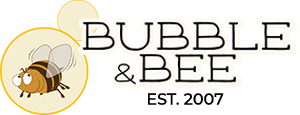Quaternary Ammonium Compounds Toxic to Cell Mitochondria and Interfere with Estrogen
What are Quaternary Ammonium Compounds?

Quaternary ammonium compounds (aka "quats") are a class of more than 1500 chemicals that are used in personal care products. Many are used as antiseptic agents and preservatives, while others are used as "conditioning" agents in hair care, skin care, and fabric softener. Their positive ionic charges help them stick to hair strands and reduce static and increase "slip" on hair. These chemical coatings make the hair have the feeling that we associate with "healthy" or "moisturized."
Quats Toxic to Mitochondria
A recent study tested a number of quats and found them to be toxic to the mitochondria in cells. Mitochondria are the "engine" of our cells helping to produce energy. In the last decade, researchers have looked to mitochondrial dysfunction as an underlying cause for several health problems, including cardiac diseases, diabetes, obesity, Alzheimer’s disease, Parkinson’s disease, and cancer.
Quats Interfere with Hormones
Since the building blocks of hormones are created in mitochondria, researchers have believed in recent years that mitochondrial dysfunction can lead to endocrine (hormone) disruption and imbalance. And, indeed, in this latest study, quats were found to interfere with estrogen. Every chemical they tested were both toxic to mitochondria and interfered with hormone function. A 2014 study found that exposure to quats decreased fertility in mice.
What to Look For
Quats can be hard to spot, but here are a list of commonly used chemicals:
Grapefruit Seed Extract (diphenol hydroxybenzene)
behentrimonium methosulfate
alkyldimethylbenzylammonium chloride
dialkyldimethylammonium chloride
pyrvinium pamoate
cetylpyridinum chloride
benzalkonium chloride
benzethonium chloride
methylbenzethonium chloride
stearalkonium chloride
behentrimonium methosulfate
distearyldimethylammonium chloride
diethyl ester dimethyl ammonium chloride
chlormequat chloride
quaternium-15
behentrimonium chloride
polyquaternium
polyquaternium-7
diquat
tetrabuylammonium hydroxide
cetrimonium chloride
cetrimonium bromide
benzyltrimethylammonium hydroxide
benzyltrimethylammonium fluoride
benzoxonium chloride
behentrimonium chloride
vegetable oil quaternary
cetalkonium chloride
guar hydroxyproplytrimonium chlroide
polyquaternium-10
quaternium-31
centrimonium chloride
stearamodopropyl dimethylamine
cocodimonium hydroxypropyl hydrolyzed rice protein
Recent Posts
-
Vegetable Emulsifying Wax NF
What is Vegetable Emulsifying Wax NF?Vegetable Emulsifying Wax NF is a blend of chemicals, namely ce …16th Aug 2024 -
Tocopherol vs. Tocopheryl Acetate: What's the Difference?
Let's look at the differences between tocopherol vs tocopheryl acetateThere are two forms of vitamin …16th Jul 2024 -
Are Essential Oils Toxic?
The following comment was made in a Facebook group for which I'm an admin. It was a lot to unpack in …16th Jul 2024
